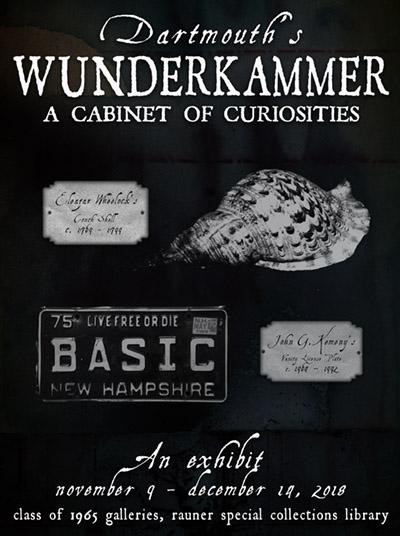1. Two Oil Lamps, Date Unknown
Hand oil lamps were some of the most common items of everyday life from ancient times through the medieval period, particularly in the Mediterranean and Mideast, where plant-based oils were in abundance. Handheld lamps were used in a variety of circumstances, including both household and ritualistic settings. They were often made of stone, clay, shell, glass or metal. Clay lamps were the most common and often included a simple decorative motif; while metal oil lamps may have been cast in more intricate molds. Metal lamps, such as those made of bronze, were almost always used as a status symbol due to the expense of the material.
The provenance of the two lamps here remains unknown, though their shapes, materials, and decorations are suggestive of the Byzantine or early Islamic periods. If replicas, however they were likely picked up by a traveler on a “Grand Tour” in a bazaar in Eastern Europe or the Middle East. One lamp is made of clay and is decorated with a simple linear pattern around the circumference of the lamp, and the other is cast in bronze in the shape of a bull’s head and has a small ring for fingers. Each lamp has two holes, one for a fibrous wick and the other for the reservoir of oil.
2. Black Arm Band Worn by Faculty to Protest 16th Street Church Bombings and George Wallace’s Visit to Dartmouth, 1963
Alabama Governor and vocal segregationist George Wallace gave a speech at Dartmouth in 1963, entitled “Brown Vs. School Board and the Law of the Land,” in which he attempted to show that the Supreme Court’s landmark Brown v. Board of Education decision in 1954 was “based on false testimony.” Twenty faculty members as well as numerous students protested Governor Wallace’s presence on campus that year. A second visit by Wallace, in 1967, drew much larger protests by students and brought the college into the national spotlight. Wallace’s 1967 speech in Webster Hall (now Rauner Library) was interrupted several times by student protests; then, while departing campus, Wallace’s car was encircled by hundreds of students.
3. Fraisse’s Ferruginois Ampoules, c.1920s
An advertisement from the 1920s describes Fraisse’s Ferruginous as used “to repair, tone up, and activate the nervous system.” An intramuscular injection manufactured in Paris, it was prescribed to treat anemia and neurasthenia, a common diagnosis for the symptoms of fatigue, headache, and irritability thought to be brought on by the experience of modern industrialized life.
Interestingly, Fraisse’s Ferruginous Ampoules, are also described in Samuel Beckett’s first published work of fiction, More Pricks than Kicks (1934)—a collection of short stories centered on the misfortunes of Belacqua Shua, a character who would reappear throughout Beckett’s writing. Describing the eventual deterioration of Belacqua’s body and mind in the book’s final story, Beckett writes:
“A little sealed cardboard box lying on the mantelpiece caught his eye. He read the inscription: Fraisse’s Ferruginous Ampoules for the Intensive Treatment of Anaemia by Intramuscular Squirtation. Registered trademark – Mozart. The little Hexenmeiseter of Don Giovanni, now in his narrow cell forever mislaid, dragged into bloodlessness!” (Samuel Beckett, More Pricks Than Kicks, p. 184).
4. John G. Kemeny’s Vanity License Plate - “Basic”, c. 1964 – 1992
John Kemeny, a Dartmouth mathematics professor and the College’s thirteenth president, was a central figure in the history of computing. In 1964, in the basement of Dartmouth Hall, Kemeny, along with fellow math professor Thomas Kurtz and a group of undergraduate students, built a time-sharing system to open computer access to everyone at Dartmouth. They also simultaneously developed a new programming language: Beginner’s All-Purpose Symbolic Instruction Code, or BASIC. BASIC was designed to be easy to learn and applicable on any computer, and made the practice of computer programming broadly accessible for the first time. Well before such notions would become commonplace, BASIC’s inventors envisioned a Dartmouth in which “every student on campus should have access to a computer, and any faculty member should be able to use a computer in the classroom.” By the 1970s and 1980s BASIC would be found on nearly all minicomputers. While it may no longer be the programming language of choice, the creation of Kemeny and his collaborators played an essential role in the development of modern computing.
5. Polar Exploration Cigarette Cards, c. 1915
Cigarette cards—souvenir trading cards issued by tobacco companies—were devised initially to stiffen packs of cigarettes. Printed in runs of twenty-five or fifty, they often featured figures from popular culture: actors, pin-ups, athletes, military figures, and business men. The two series on display here were produced by Player’s, a British tobacco company started in the nineteenth century, and commemorate European Polar expeditions. The images on view are titled “How Icebergs are Formed” (left) and “An Adélie Penguin and his Mate” (right). A short description and anecdote related to the image on the card is found on the back. About the Adélie Penguin, for example, the anecdote reads: “The little birds waddle and run in a ludicrous fashion, and their hoarse squawk of surprise at seeing a man cause the members of the expedition unbounded amusement.” While these cigarette cards are representative of popular early twentieth-century ephemera, their subject of Polar exploration also fits into an important collecting area for Dartmouth Library.
